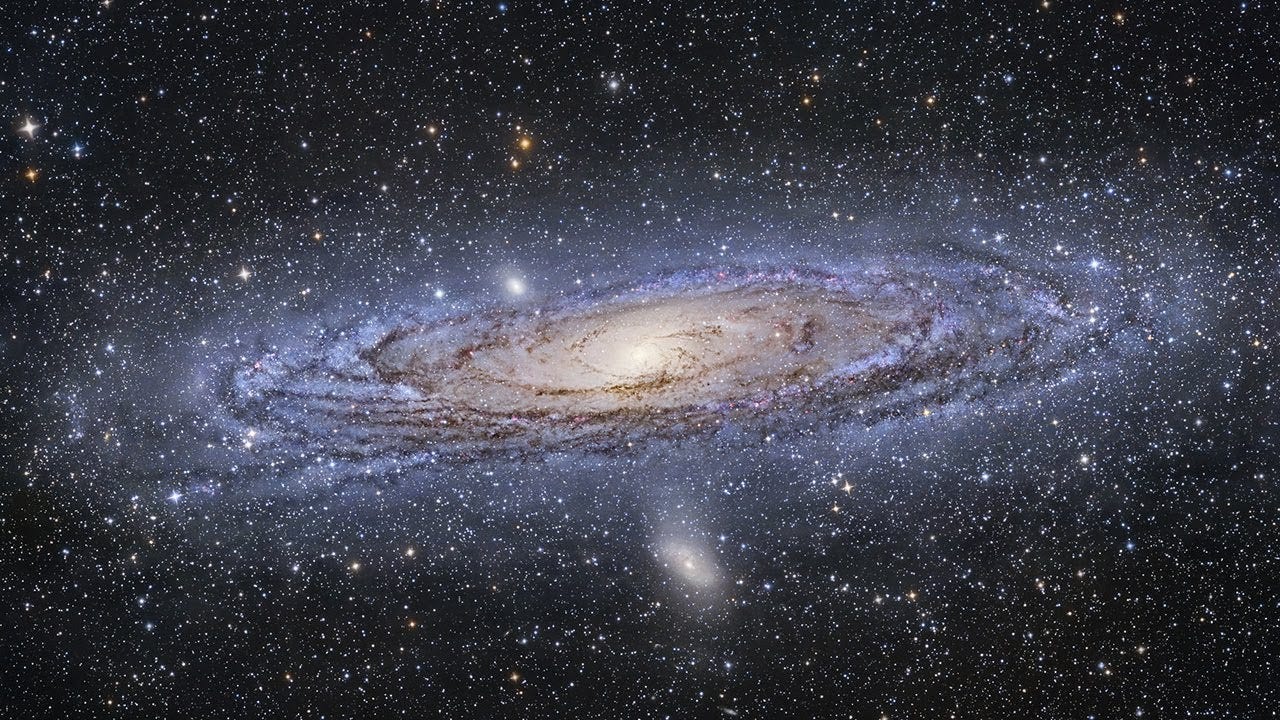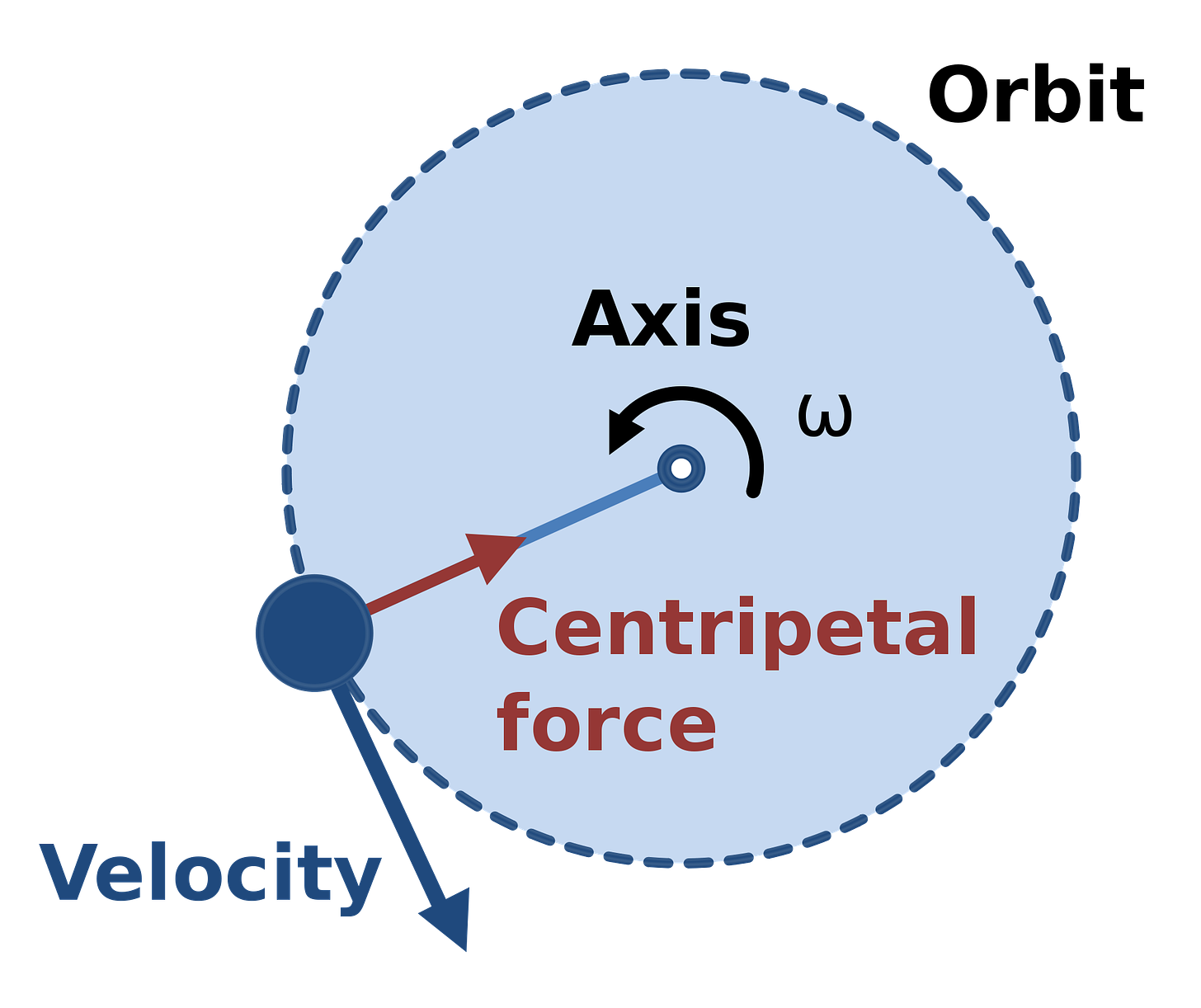Sunday, February 25, 2024
Heliocentricity and Theoretical Proofs (part one).
Newtonian gravitation is not proof of heliocentricity.
by StFerdIII
The claim
There is a severe paucity of proof for heliocentricity. The theory is simply accepted as fact, without mechanical and observational verification. There is voluminous evidence from the 19th and 20th centuries which contradicts and disputes both heliocentricity and its apologist framework, the Special Theory of Relativity. The errors and lack of mechanical proofs are covered extensively in a previous set of posts.
In this post we will have a hard look at what is incorrectly forwarded as Newton’s key ‘law’ that smaller bodies always orbit larger. This is usually offered as ‘proof’ of heliocentricity, but as we will see when discussing the greater universal forces at work, this is not the case. In fact, this supposed ‘law’ provides more evidence for geocentrism than Copernicanism, a consideration that is anathema to ‘The Science’.
What did Newton say?
Newton neither said nor proved that a smaller object must always orbit the larger. Newton merely stated that when we have two or more bodies in a rotating system, all bodies will revolve around the center of mass (also known as the center of gravity). It is a natural effect and phenomena that the ancients probably well understood:
“That the center of the system of the world is immovable: this is acknowledged by all, although some contend that the Earth, others that the sun, is fixed in that center” (Isaac Newton, Philosophiae Naturalis Principia Mathematica, Book 3: The System of the World, Proposition X, Hypothesis I)
Our own solar system and ‘milky way’ galaxy is not a closed system. It is open and a part of a far larger universe. This is one of the problems with Einstein’s thought experiments - he assumes a closed system. If we did have a closed system and there were only 2 planets namely the Earth and Sun, then the corrupted Newtonian claims that the smaller object or Earth would orbit the larger body the Sun, would likely be sensible and valid. But that is not our reality. There is a little factor called ‘the rest of the universe’ which Newtonians and Copernicans often ignore. The universe is estimated to contain five sextillion stars. Quite a mass of weight one would imagine.
Where is the center Chud?
In Newtonian physics the center of our solar system must find its location at the ‘center of mass’, which would consider all the bodies and masses within our solar system (ignoring for the moment the rest of the universe). The displacement of this center within our solar system would of course not be the Sun itself, but would find its locus at quite an appreciable distance from the Sun. Now add in the rest of the universe beyond our solar system. The ‘center’ would need to migrate and be displaced even further from our Sun. There is no proof that the center of universe is located with our Sun. Such a claim, if ever made, has no empirical evidentiary support.
As Fred Hoyle the famed physicist and astronomer (who believed in panspermia, and space-travelling ‘viruses’) stated: “If a new body is added to the set from outside, or if a body is taken away, the “center” changes” (Hoyle, p. 85). This makes perfect sense. We should take into account the weight within our solar system, our own galaxy and other galaxies (new planets, comets, collisions causing destruction etc) when assessing mass attraction, gravity and the impact on inertial motion.
If we add in the ‘weight’ of the universe there must be an enormous impact on bodies within our solar system. This implies that there is no ‘law’ that the Earth must revolve around the Sun given the displacement of this center. It might well be that the Sun and planets revolve around the Earth in a Tychonic or Ptolemaic system, which current scientific observations would support as easily as they would support a Sun-centric view. Or it might imply a completely different model not yet considered by ‘The Science’.
The center of all masses
Given the size and mass weight of stars and bodies in our universe, there will be many local centers of mass. These federated and local systems do not impinge or supersede the center of mass for the universe itself. This means that each galaxy will have its own center of mass. This seems logical. While the constellation of planets in our solar system will have a center of mass near the Sun; and while the moons of the planets have a center of mass near their respective planet, these are only local centers of mass.
When we consider all the mass of the universe, there is only one place where the universe’s center of mass exists. Newton’s principle given above that the ‘center of the system of the world is immovable’ does not mean that heliocentricity is proven. There are many models which fit the observational data. If for example, the universe was in rotation, Newton’s laws would demand that it rotate around its singular center of mass. This could be the Earth (or not). As Hoyle states it, the equivalence between heliocentricity and geocentricity was recognized not only in geometry, but also in the gravitational and inertial dynamics:
“…we can take either the Earth or the Sun, or any other point for that matter, as the center of the solar system. This is certainly so for the purely kinematical problem of describing the planetary motions. It is also possible to take any point as the center even in dynamics, although recognition of this freedom of choice had to await the present century” (Hoyle, p. 82)
Most physicists accept the concept that, “Mass there governs inertia here.” Newton never took the mass of the universe into account, and this is a primary inadequacy of his theory of motion (Misner, et al pp. 543).
Newton’s Oubliette
Newton failed to consider the gravitational and inertial forces found in the rest of the universe when he composed his laws of motion. The missing parts of his theory directly affect the choice one makes for either Copernicus, Ptolemy or Tycho Brahe. As the Brazilian physicist, Andre Assis, puts it:
“Leibniz and Mach emphasised that the Ptolemaic geocentric system and the Copernican heliocentric system are equally valid and correct…the Copernican world view, which is usually seen as being proved to be true by Galileo and Newton…Despite the gravitational attraction between the sun and the planets, the earth and other planets do not fall into the sun because they have an acceleration relative to the fixed stars. The distant matter in the universe exerts a force…..on accelerated planets, keeping them in their annual orbits.” (Assis, pp. 190-191)
This is an important point, ‘The distant matter in the universe exerts a force…..on accelerated planets’. Without such forces, the Earth would indeed be swallowed by the Sun.
Mach power
The principle of ‘equivalence’, based on Kepler and Mach’s maths, was enunciated by Einstein to explain uniform acceleration in an ‘inertial system’. The Special Theory of Relativity does not account for acceleration, nor non-linear motions. There are no absolutes in STR, and everything must be relative (many posts have gone through the proofs of why STR is unscientific).
But if we accept at face value Einstein’s incorrect model of the universe, we can see that heliocentricity is just a theory as given by this principle of equivalence. STR has never proven heliocentricity, nor has it done much to fix the gap in Newton’s laws of inertial motion. Einstein uses 2 systems, one called ‘A; and the other ‘I’ to explain:
“Let A be a system uniformly accelerated with respect to an “inertial system.” Material points, not accelerated with respect to I, are accelerated with respect to A, the acceleration of all the points being equal in magnitude and direction. They behave as if a gravitational field exists with respect to A, for it is a characteristic property of the gravitational field that the acceleration is independent of the particular nature of the body. There is no reason to exclude the possibility of interpreting this behavior as the effect of a “true” gravitational field (principle of equivalence) (Einstein, p. 14.)
A is a system in uniform motion with respect to another system within a defined grid or system. Within A but outside of I, objects are accelerated whose movement will not only be impacted by the gravitational attraction within system A, but also from the total mass of attraction which includes I. This indicates that within our own solar system, not only the Sun but the planets and every other moving object in our system (comets, asteroids, moons), are controlled by the galaxies and the collective attraction and weight. This ‘true gravitational field’ or principle of equivalence removes the mystery out of inertia and why the planets travel in precise orbits.
“Kepler’s standpoint is particularly interesting, since he was deeply impressed by Tycho Brahe’s ‘demolition’ of the crystal spheres. Kepler posed the problem of astronomy in the famous words: “From henceforth the planets follow their paths through the ether like the birds in the air. We must therefore philosophize about these things differently.” (J. Barbour, p. 9.)
Kepler, the Protestant astronomer whose maths were the first theoretical proofs to support Copernicanism, came up with a rather ‘Machian’ solution. Kepler’s maths suggested that the planets could not possibly follow such precise orbits by a mere inspection of empty space. The elliptical and complicated journeys must be guided and driven in their motion by the real masses in the universe, namely, the Sun and the sphere of the fixed stars. This insight by Kepler pre-empted that of Mach by some 300 years and is perfectly aligned to what most physicists believe today, namely that the mass of the universe is an essential ‘force’ which accounts for the observational data on planetary motions.
This supports Mach’s principle which was in large measure a restatement of observations by the English astronomer George Berkeley in the 1700s:
(Encyclopedia Britannica) “Mach’s principle, in cosmology, hypothesis that the inertial forces experienced by a body in nonuniform motion are determined by the quantity and distribution of matter in the universe. It was so called by Albert Einstein after the 19th-century Austrian physicist and philosopher Ernst Mach. Einstein found the hypothesis helpful in formulating his theory of general relativity—i.e., it was suggestive of a connection between geometry and matter”
The Kepler-Berkeley-Mach ‘principle’ means that there are absolutes including mass and gravitational attraction. Even Newton admitted that this was valid.

